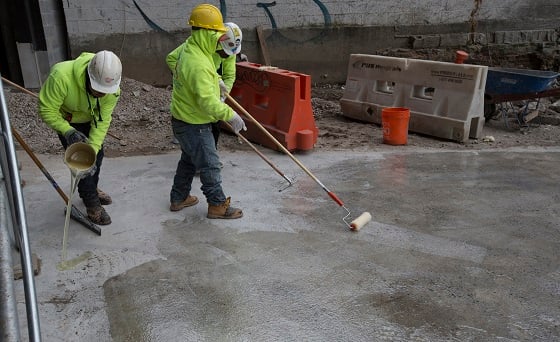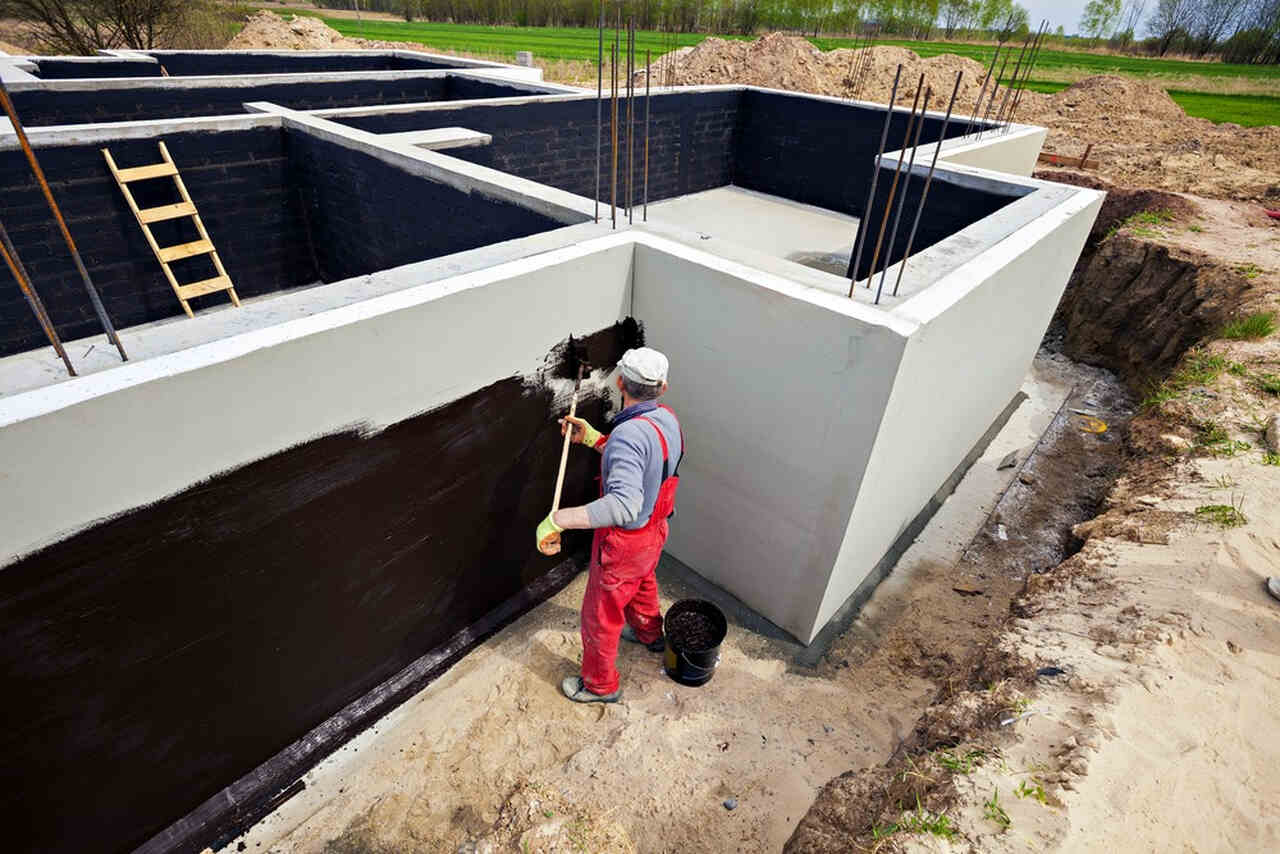Kinds of Waterproofing: Checking Out the Various Techniques and Their Applications
Waterproofing is a vital aspect of building and upkeep. It secures structures from the detrimental effects of water damages. There are a number of approaches available, each with its distinct applications and advantages. From membrane systems to cementitious remedies, understanding these alternatives is necessary for effective implementation. The option of waterproofing method can substantially influence longevity and longevity. Exploring these various techniques reveals their unique benefits and potential challenges, motivating further factor to consider of ideal solutions.
Membrane Waterproofing Systems
Membrane waterproofing systems act as an important barrier against water breach in numerous structures. These systems commonly contain thin sheets made from materials like rubber, thermoplastic, or bitumen, which are put on surface areas to stop dampness penetration. They can be installed over or listed below grade and are specifically efficient in areas prone to high water direct exposure, such as basements, roofs, and foundations.The installation process entails cleansing the substratum, applying adhesives or primers, and exactly suitable the membrane to ensure complete insurance coverage. Membrane layer systems can be either fully stuck, mechanically affixed, or laid loose, depending on the certain demands of the task. They supply durability and versatility, suiting architectural motions without jeopardizing their waterproofing abilities. In addition, these systems can be strengthened with extra layers for improved security. Ultimately, membrane waterproofing systems are essential for protecting frameworks against water damage and maintaining lasting stability.
Liquid-Applied Waterproofing Coatings
Liquid-applied waterproofing coatings provide a functional solution for securing surfaces from water seepage - Yard drainage Omaha. These finishings contain liquid materials that, when applied, create a smooth, adaptable membrane layer. Their versatility permits for application on various substratums, consisting of concrete, metal, and timber. The finishes can be made use of in varied environments, from property to industrial setups, making them appropriate for roofings, structures, and below-grade structures.One considerable advantage of liquid-applied layers is their ability to comply with irregular forms and penetrate cracks, producing a durable barrier versus moisture. They usually show superb attachment homes and resistance to UV radiation, making certain durability and durability. Additionally, the application process is commonly simple, enabling fast installment and lowered labor costs. This method additionally minimizes the threat of water pooling, as the continuous layer effectively routes water far from at risk areas. On the whole, liquid-applied waterproofing finishes are an efficient selection for extensive water defense
Cementitious Waterproofing Solutions

Cementitious waterproofing solutions use a robust option for frameworks requiring trustworthy wetness defense. These systems largely make use of a blend of concrete, sand, and have a peek at this site chemical additives to create a water resistant obstacle. They are often applied to surface areas such as concrete walls, structures, and floors, offering a sturdy, lasting defense versus water intrusion.One of the vital advantages of cementitious waterproofing is its convenience of application; it can be used utilizing a brush, roller, or spray, making it appropriate for different job sizes. Furthermore, this approach is compatible with numerous surface areas and can usually be utilized combined with various other you could check here waterproofing techniques.Cementitious solutions are especially efficient in settings where water direct exposure is a worry, such as basements or below-grade frameworks. Their exceptional adhesion properties ensure that they bond well with substratums, supplying a strong and impermeable layer versus moisture penetration.
Bentonite Waterproofing
Bentonite waterproofing is an extremely effective technique that makes use of sodium bentonite clay to create an all-natural barrier versus water. This technique exploits the unique residential or commercial properties of bentonite, which increases upon call with water, securing any prospective leakages and avoiding wetness infiltration. It is commonly made use of in numerous applications, including structure wall surfaces, tunnels, and maintaining walls, where water resistance is essential.Bentonite can be used in several types, such as panels or coverings, offering adaptability in installment. Its capability to self-seal makes it an eye-catching alternative for areas based on changing dirt or fluctuating water degrees. In addition, bentonite waterproofing is eco pleasant, as it is an all-natural material that does not present unsafe chemicals into the environments.
Drainage and External Waterproofing Systems
Effective waterproofing typically includes a mix of techniques, consisting of drainage and external systems. Water drainage systems, such as French drains and sump pumps, are developed to reroute water away from structures, decreasing hydrostatic stress versus structures. These systems are important in stopping water accumulation that can bring about structural damage and mold growth.External waterproofing, on the various other hand, entails applying safety obstacles to the building's outside. Techniques such as the setup of water resistant membrane layers, coverings, or sealants can help protect against water seepage. This approach not only protects the structure yet additionally boosts the total longevity of the structure.Together, water drainage why not look here and exterior waterproofing systems develop a thorough service to handle water effectively. By implementing these approaches, home proprietors can secure their investments against the destructive impacts of dampness, guaranteeing long-lasting stability and safety for their structures.
Often Asked Concerns
Just how Do I Pick the Right Waterproofing Approach for My Project?
Picking the ideal waterproofing approach relies on factors such as task type, ecological conditions, budget plan, and wanted long life. Examining these facets allows for notified choices tailored to certain demands and needs.

Can Waterproofing Be Applied in Winter Conditions?
Waterproofing can be applied in cool weather condition problems, yet it requires specific products and methods. Cold temperature levels may impact curing times and attachment, demanding mindful selection of items created for low-temperature application.
What Are the Typical Indicators of Waterproofing Failure?
Common indications of waterproofing failure consist of noticeable water discolorations, peeling paint, damp odors, mold development, and cracks in walls or structures. Drainage & waterproofing company Omaha. These indicators recommend that wetness is penetrating the barrier, endangering its efficiency
How Much Time Does Waterproofing Last Before Needing Upkeep?
The longevity of waterproofing varies, generally lasting between 5 to one decade. Variables such as worldly quality, environmental problems, and upkeep methods affect its sturdiness, necessitating regular evaluations to ensure effective security versus water intrusion.
Are There Eco-Friendly Waterproofing Options Available?
The question of eco-friendly waterproofing alternatives reveals a growing passion in sustainable materials (Drainage & waterproofing company Omaha). Numerous all-natural substances, such as plant-based sealants and recycled items, use efficient options while lessening ecological impact, attracting environmentally conscious customers